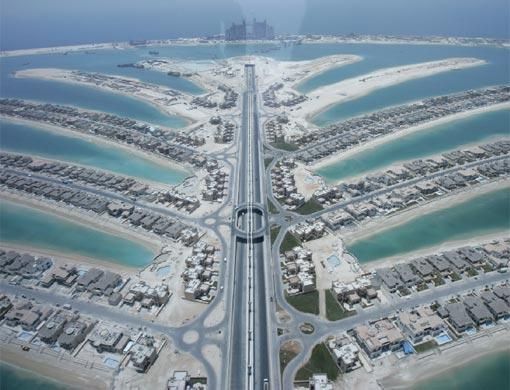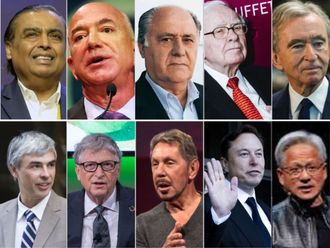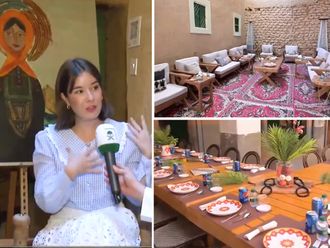District cooling is not a new concept in the Middle East. The region was introduced to this effective system of air-conditioning (which allows for central plants to cool water and distribute it through a network of piping systems to individual buildings) way back in the mid-1960s when the first plants were built in Bahrain and Kuwait.
Since energy conservation was not high on the political agenda back then, district cooling was slow to gain in prominence. Now with so much being written about global warming and the efforts to cut energy consumption, particularly within the residential sector, the focus is once again on district cooling.
Property developers are, in fact, being encouraged to move away from conventional cooling methods to more efficient centralised systems.
In a district cooling system, water that has been cooled to 5 to 8 degrees Celsius is fed from a central plant via a network of underground pipes to buildings where it circulates through fan coil units.
Within these units, fans blow air across coils carrying the chilled water and the air is subsequently cooled. It is believed that district cooling uses 40-50 per cent less energy than traditional air-conditioning systems, which can account for as much as 70 per cent of a building's electricity bill.
Other advantages that district cooling has over air-conditioning are that the former generates less noise and is less prone to breakdowns, and maintenance needs are considerably reduced.
In the Middle East, the UAE currently generates the most orders for district cooling installations.
According to Adib Moubadder, General Manager of Emirates District Cooling Company LLC (Emicool), "Some of the reasons why most new developments have opted for district cooling have been the rapid growth in the construction sector, global warming, ozone protection, environmental challenge and a conscious effort to save energy.
Also, the worldwide hike of oil prices has escalated utility tariff globally." District cooling requirements can roughly be estimated to be 10 million TR (tonnes of refrigeration) in the next eight to 10 years, which require an investment of around Dh75 billion, says Moubadder.
The US-headquartered International District Energy Association (IDEA), which works to advance global environmental quality through efficient district energy, feels that with projects worth trillions of dollars being planned here, the Middle East has adopted district cooling as a preferred technology since governments and developers are conscious of the need to employ energy-efficient and environmentally friendly technologies in all sectors.
Shafiq Al Khoori, Managing Director of Palm District Cooling, says "District cooling helps in better utilising the limited natural resources. At present most district cooling companies use centrifugal water cooled chillers. Of late the district cooling industry has started to look at different materials for the piping networks.
This is a shift from the conventional steel pipes that have been used for a long time. Other technologies will be introduced if new regulations (related to district cooling) are introduced.
For instance, the introduction of thermal energy storage, which will be incorporated by district cooling companies if off-peak tariffs are introduced by the local power companies.
Palm District Cooling is also promoting the use of treated sewage effluent, as make-up water for condenser cooling, in place of potable water. This would finally help in preserving water."
District cooling consumes vast amounts of water, which like electricity, is lacking in the Middle East. The only other alternative to potable water is grey water or salt water, but the problem with this is that the equipment has to be designed to resist corrosion.
The Dubai Electricity and Water Authority (DEWA) earlier this year wrote to all district cooling providers operating in the emirate, inviting them to use its treated sewage effluent in their cooling towers. After the UAE, Qatar and Saudi Arabia have a strong market for district cooling.
"Developers in the region are nowadays more aware of the benefits of district cooling technology," said Dany Safi, CEO, Tabreed. "The recent trend of developing green buildings in the UAE has encouraged the district cooling sector and we are confident that the coming years will witness increased interest in this advanced technology."
Tabreed has provided cooling services to Shaikh Fatima Tower in December 2007 and will start supplying to the Rolex Building from February 2009 from its Shaikh Zayed Road plant.
It currently operates 31 district cooling plants in the UAE from which it sells chilled water air-conditioning services to customers that are connected to the relevant distribution network. The company's 2007 revenues increased to Dh549 million, a 17 per cent rise over 2006.
Besides Tabreed, four other district cooling plants have been launched in the UAE in the past few years. Three of these — Emaar District Cooling, Palm District Cooling and Emirates District Cooling — are affiliated with property developers.
For instance, Palm District Cooling provides district cooling service for a significant number of prestigious developments, including Gardens Residential Complex, Jumeirah Islands, Discovery Gardens and Palm Jumeirah Trunk. The fourth entrant, Empower, is a Dubai government venture catering to the needs of the Dubai Holding projects.













